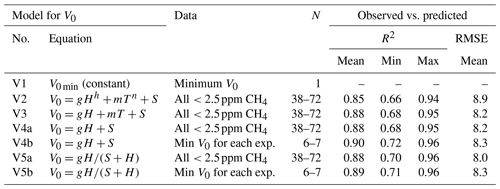

Technical Support Document: Social Cost of Carbon for Regulatory Impact Analysis Under Executive Order 12866. Interagency Working Group on the Social Cost of Carbon, United States Government. Quantifying uncertainties in climate system properties with the use of recent climate observations.
JASON SCHWARTZ SOCIAL COST METHANE MANUAL
DICE 2013R: Introduction and User’s Manual 2nd edn (2013).įorest, C. The effects of time-varying observation errors on semi-empirical sea-level projections. Emulating coupled atmosphere-ocean and carbon cycle models with a simpler model, MAGICC6 – part 1: model description and calibration. A simple object-oriented and open-source model for scientific and policy analyses of the global climate system – Hector v1.0. The climate framework for uncertainty, negotiation and distribution (FUND). FAIR v1.3: a simple emissions-based impulse response and carbon cycle model. Probabilistic hindcasts and projections of the coupled climate, carbon cycle and Atlantic meridional overturning circulation system: a Bayesian fusion of century‐scale observations with a simple model. Valuing Climate Damages: Updating Estimation of the Social Cost of Carbon Dioxide (The National Academies Press, 2017). National Academies of Sciences, Engineering, and Medicine. How well do integrated assessment models represent non-CO 2 radiative forcing? Clim. (United States Environmental Protection Agency, 2016). Regulatory Impact Analysis of the Final Oil and Natural Gas Sector: Emission Standards for New, Reconstructed, and Modified Sources. California’s 2017 Climate Change Scoping Plan: The Strategy for Achieving California’s 2030 Greenhouse Gas Target. Incremental CH 4 and N 2O mitigation benefits consistent with the US government’s SC-CO 2 estimates. The marginal damage costs of different greenhouse gases: an application of FUND. Estimating the social cost of non-CO 2 GHG emissions: methane and nitrous oxide. The marginal impacts of CO 2, CH 4, and SF 6 emissions. The climate change benefits of reducing methane emissions. Addendum to Technical Support Document on Social Cost of Carbon for Regulatory Impact Analysis Under Executive Order 12866: Application of the Methodology to Estimate the Social Cost of Methane and the Social Cost of Nitrous Oxide. Interagency Working Group on Social Cost of Greenhouse Gases, United States Government. Radiative forcing of carbon dioxide, methane, and nitrous oxide: a significant revision of the methane radiative forcing. Methane emission reduction: an application of FUND. Multi-gas assessment of the Kyoto Protocol. Overview of EMF-21: multigas mitigation and climate policy. Our central equity-weighted estimate for the USA increases to US$8,290 per tonne of CH 4 whereas our estimate for sub-Saharan Africa decreases to US$134 per tonne of CH 4. Extending our results to account for societal concerns about equity produces SC-CH 4 estimates that differ by more than an order of magnitude between low- and high-income regions. But switching IAMs can more than double the estimated SC-CH 4. We also show that our SC-CH 4 estimates are sensitive to model combinations for example, within one IAM, different methane cycle sub-models can induce variations of approximately 20 per cent in the estimated SC-CH 4. Tightened equilibrium climate sensitivity estimates paired with the effect of previously neglected relationships between uncertain parameters of the climate model lower these estimates. Under a low-emissions scenario (RCP 2.6), our multi-model mean decreases to US$710 per tonne of CH 4. Our ninety-fifth percentile estimate is 51 per cent lower than the corresponding figure from the US framework.

Our multi-model mean estimate for the SC-CH 4 is US$933 per tonne of CH 4 (5–95 per cent range, US$471–1,570 per tonne of CH 4) under a high-emissions scenario (Representative Concentration Pathway (RCP) 8.5), a 22 per cent decrease compared to estimates based on the climate uncertainty framework used by the US federal government 5. Here we estimate the SC-CH 4 by incorporating the recent upward revision of 25 per cent to calculations of the radiative forcing of methane 4, combined with calibrated reduced-form global climate models and an ensemble of integrated assessment models (IAMs). However, current SC-CH 4 estimates have not included key scientific findings and observational constraints. This valuation may in turn be used in cost–benefit analyses or to inform climate policies 1, 2, 3.

The social cost of methane (SC-CH 4) measures the economic loss of welfare caused by emitting one tonne of methane into the atmosphere.


 0 kommentar(er)
0 kommentar(er)
